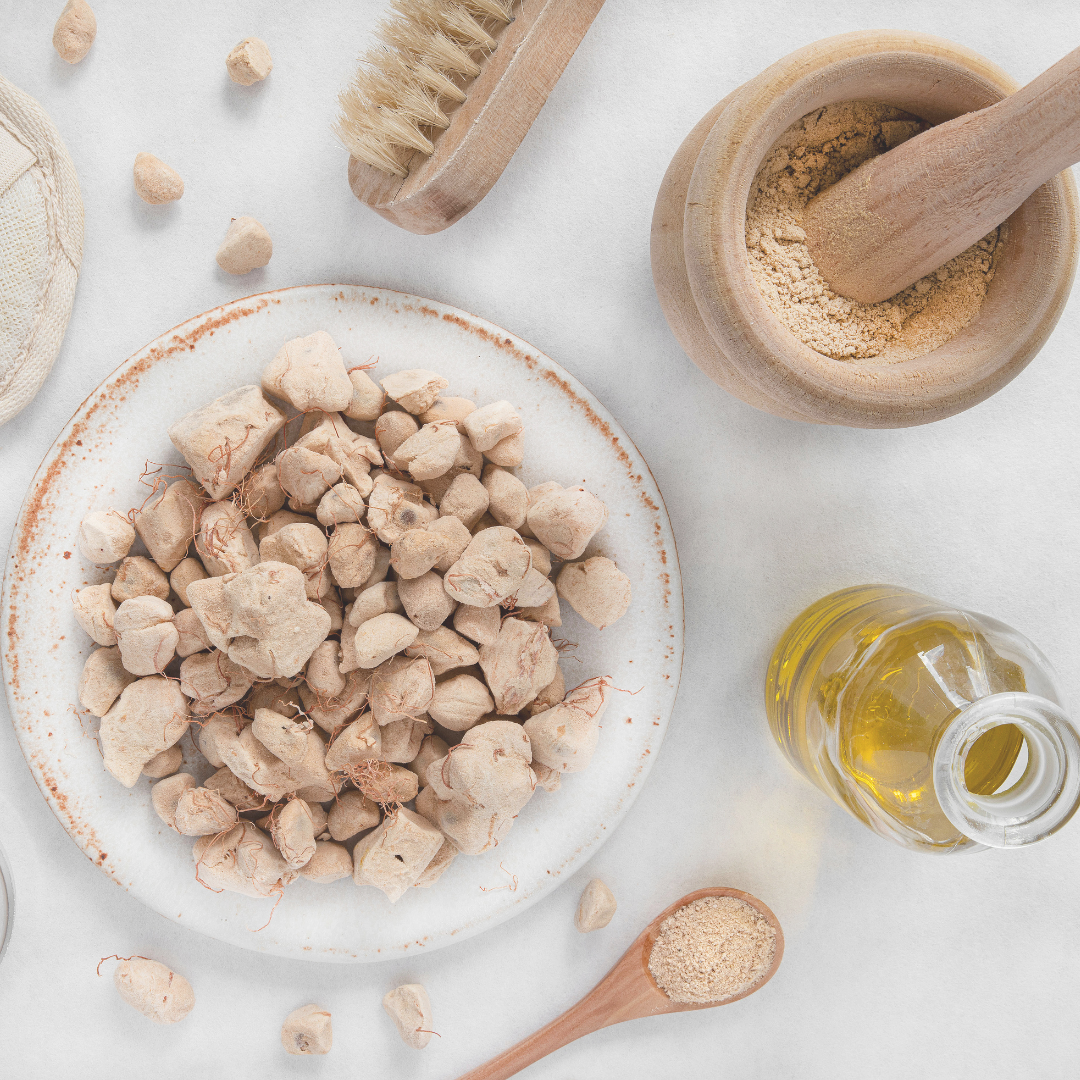
From Ancient Civilizations to Modern Shelves: Hair Care as a Cultural and Scientific Ritual
Share
Hair care has always been more than a matter of hygiene. From the ancient world to today’s shelves overflowing with bottles and balms, it has served as a powerful symbol of identity, status, health, and even spirituality.
The Sacred Origins of Hair Rituals
As early as ancient Egypt, hair received meticulous attention. Pharaohs both men and women applied Castor, Almond, or Moringa oils to soften and shine their hair, often braided or concealed beneath elaborate wigs. Plant oils, delicately scented with resins or floral essences, were used to hydrate the scalp, protecting it from the relentless sun and desert sands.
In Ayurvedic medicine in India, warm oil scalp massages using Coconut, Bhringraj, or Amla oil were recommended not only for beautification but also to stimulate blood flow and support emotional well-being.
Japanese tradition has long revered Camellia oil (tsubaki), cherished since the Heian period for its softening and protective properties a beauty secret still passed down through generations.
And Today?
In modern society, the ritual has shifted toward performance. Smoothing shampoos, densifying masks, volumizing sprays, heat-protective serums, this abundance of products can leave consumers more confused than informed.
Yet paradoxically, the fundamental needs have remained unchanged for millennia:
-
Cleanse without stripping
-
Nourish without weighing down
-
Enhance without harmful additives
Today’s consumer, however, is more discerning. They scrutinize the INCI list, avoid silicones, endocrine disruptors, and sulfates. They seek understanding. They demand not only efficacy, but also ethics, sensory pleasure, and sustainability.
A Return to Common Sense
In this landscape, a new wave of brands is emerging—driven by a scientific, minimalist, and nature-rooted philosophy. Multipurpose oils, raw or biotech-enhanced treatments are being rediscovered. The essentials are being re-embraced: respecting the scalp’s microbiome, restoring a balanced hydrolipidic barrier, and understanding the natural hair growth cycle.
Biological science confirms that the scalp’s environment, its pH, sebum levels, inflammation status, and microbial flora plays a crucial role in hair health. A study published in the Journal of Cosmetic Science (2017) demonstrated that certain surfactants disrupt the microbiome and gradually weaken the hair fiber1.
Hence the growing importance of gentle, intelligently formulated products neither overloaded nor overly simplistic. Treatments designed to restore rather than merely mask.
In Summary: An Ancestral Need, a Contemporary Demand
Hair care is not a trend. It is a deeply human tradition now honored with greater knowledge, deeper awareness, and refined elegance.
Lilly Chance is part of this lineage: rituals inspired by ancient heritage, empowered by science, grounded in nature, and designed for those who believe that beautiful hair is, above all… respected hair.
References:
[1]: D. Callewaert et al. (2017). Characterization of the scalp microbiome and hair properties in healthy individuals and patients with seborrheic dermatitis and dandruff. Journal of Cosmetic Science, 68(3), 175-187.
[2]: R. Sethi & A. Dhingra (2014). Traditional and Modern Use of Oils for Hair Treatment. International Journal of Pharmaceutical Sciences and Research, 5(7), 2581–2585.
[3]: G. Ito et al. (2003). Camellia oil and its effects on the skin and hair. Journal of the Society of Cosmetic Chemists of Japan.
